 |
||||||||||||||||||||||||
 |
 |
|||||||||||||||||||||||
 |
||||||||||||||||||||||||
 |
 |
 |
 |
|||||||||||||||||||||
| 2015 CIRCLES | 2014 CIRCLES | 2013 CIRCLES | 2012 CIRCLES | |||||||||||||||||||||
|
||||||||||||||||||||||||
 |
 |
|||||||||||||||||||||||

|
Ground Report – Lewes, East Sussex, 29/07/05This crop circle can be spotted easily from the A27, although the hillside location is not enough to provide a clear view of the design itself. It comprises two elements. Firstly, a three petalled ‘flower’ formed of three circular ‘segments’ surrounding a central standing circle. 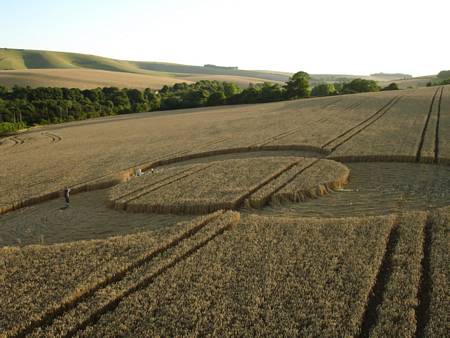
To the side of this is a small ‘pictogram’ comprising a laid circle with a ‘trident’ section attached, followed by a smaller outlying circle. 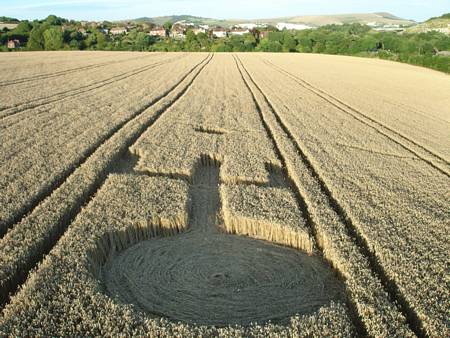
The diameter of the standing circle in the centre of the main design is 76ft, and the diameter of the three laid circles which overlap the central circle is 80ft. The centre of the standing circle in the main part of the design interestingly does not lie on a tramline, and at this point there does not appear to be any obvious sign of damage to the standing crop. 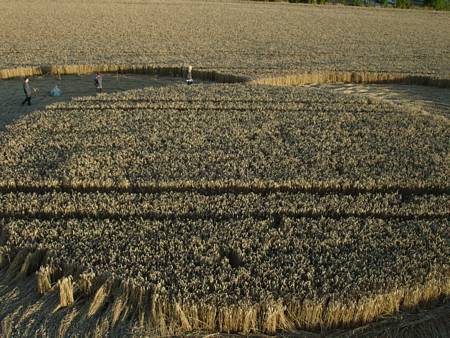
Around the outside of the central circle there is a path a few inches wide which runs clockwise. This is separate from the crop which flows through the rest of each of the laid ‘petals’. It is only really evident where the crop is flowing ‘away’ from the central circle, rather than where it flows towards it. 
The diameter of the main circle in the pictogram is 27ft, and the width of the pathways forming the ‘trident’ section is generally 5ft. The crop is laid clockwise throughout the formation, and within the lay there are many interesting features. In many areas, the crop appears to have been laid a few inches from the base, giving a ‘bumpy’ look to the main flattened sections. When walking on these areas it is clear that each step is causing damage to the stems and it does not seem like they have been trodden on before. 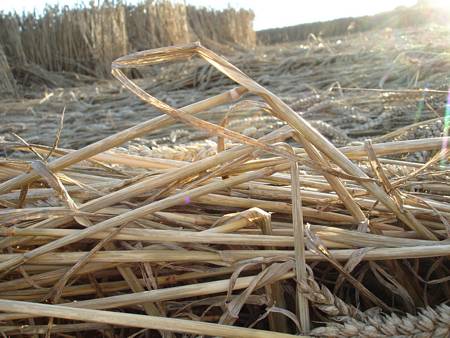
This light lay continues at many points where the crop flows over tramlines. Here and in other parts of the formation the crop shows very little sign of damage caused by it having been squashed down with excessive force. 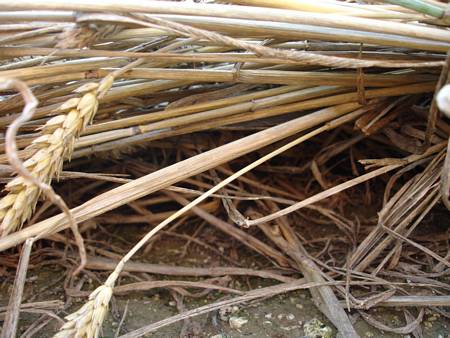
Due to the fact that the crop flows clockwise, in each of the laid circular ‘segments’ which surround the standing central circle, half of the crop appears to flow ‘out’ from the standing crop, while the other half flows towards and ‘into’ the standing crop. Where this occurs, much of the crop seems to flow gently up the sides and actually pushes into the standing circle, making the edges look a little scruffy. This effect was present in all three aid circles, and can be seen in the image below. 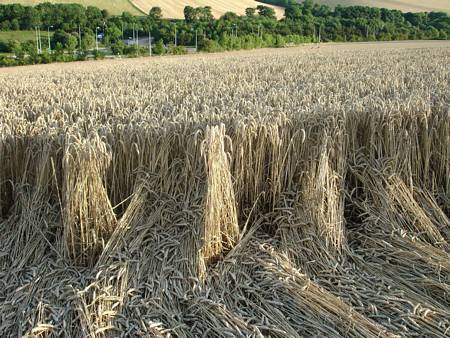
Although the crop circle lies on a hill, there is no evidence of the crop having been laid more firmly to the ground on the downhill sloping sections of the design than on those where the crop flows ‘uphill’. In the small ‘pictogram’ to the side of the main design, there is a very nice ‘nested’ centre. The crop here has been bent and woven around a central point, which is a few inches wide. 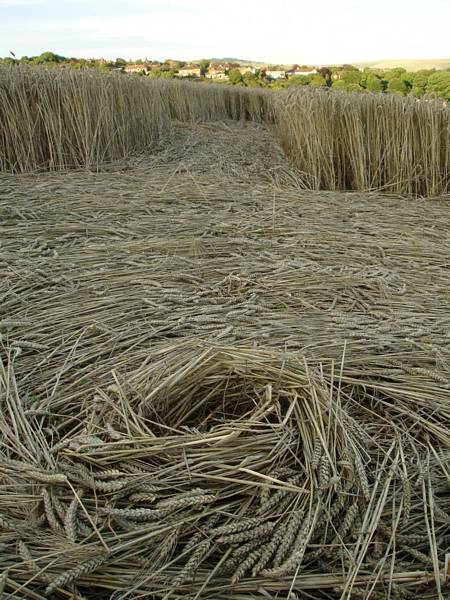
The condition of the crop throughout the formation was generally very good. I was not able to visit until a few days after its appearance, and there had clearly been quite a few visitors since then. There were areas where the crop was quite crushed and kinked, but also many places where there appeared to be no damage whatsoever. 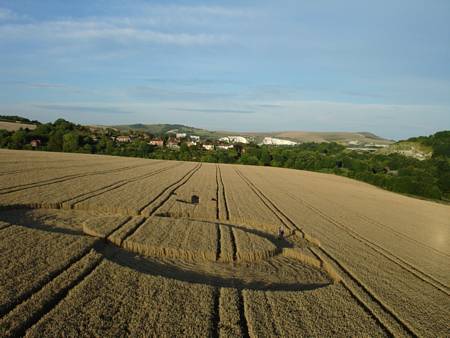
Another interesting formation to continue this rather ‘slow’ Sussex season, and another nice one too. The visible location is great, and I think this crop circle made it into a local newspaper, all of which continues to help bring this fantastic phenomenon into the public eye, whatever people currently believe it to be! 
Crop Circle Summary
Alternative Websites |

